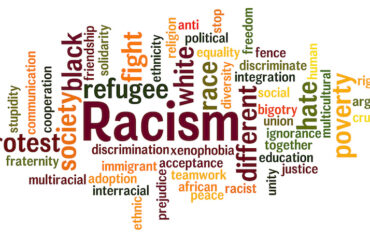Forensic impression evidence has become the subject of increased levels of scientific scrutiny. In particular, bite-mark evidence has been seriously questioned due to its weak underpinnings and the exaggerated testimony about it by some witnesses. This raises a question: how did bite-mark evidence become admissible in the first place?

Witchcraft and Bite Marks
With one notable exception, before 1974, forensic dentists were primary used to identify human remains. That exception occurred in Salem, Massachusetts in 1692 when bite marks were used to “prove” that Rev. George Burroughs was guilty of witchcraft. During the trial “the defendant’s mouth was pried open and the prosecution compared his teeth with the teeth marks left on the bodies of several injured girls present in the courtroom.”[1] Burroughs was convicted and hanged. Two months later, the governor called for the end of the trials, and prohibited the use of “spectral and intangible evidence.”[2]
It took another 313 years before a court, in the case of People of California v. Marx, upheld the admission of bite mark expert testimony.[3] The judges conceded bite mark testimony lacked scientific support, but concluded that the testimony was admissible as “a matter of common sense.”[4] The following year, an Illinois Court, relying on Marx, decided bite-mark evidence was admissible as “a logical extension of the accepted principle that each person’s dentition is unique.”[5] Another California court, also citing Marx, held bite mark comparison had attained general acceptance in the scientific community.[6] The floodgates were opened, with 37 jurisdictions admitting bite-mark evidence by 2004.[7]

Science and Bite Marks
Five years later, the National Research Council raised the first serious questions about bite marks. “[T]here is continuing dispute over the value and scientific validity of comparing and identifying bite marks.”[8] In 2016, the President’s Council of Advisors on Science and Technology cautioned: “[B]ite mark analysis does not meet the scientific standards for foundational validity, and is far from meeting such standards….”[9] That same year the Texas Forensic Science Commission went further concluding there was no scientific consensus about bite mark comparison and it should “not be admissible in Texas criminal courts….”[10]
Courts across the United States reacted to these warnings by ignoring them. In states that apply the test created in Daubert v. Merrell Dow Pharmaceuticals, Inc.[11] this is difficult to understand, as Daubert requires courts to revisit scientific evidence each time it is offered.[12]
However, in jurisdictions which still apply the standard in Frye v. United States,[13] a different question arises: Does a Frye ruling last forever?
Is Frye v. United States forever?
Frye was the first serious attempt to grapple with the admissibility of scientific evidence in an American courtroom.[14] The defendant moved to admit the results of a lie detector test. The lower court denied the request, leaving the appellate court to consider what it called a “novel question” where “[N]o cases directly on point have been found.”[15] This opinion, which was only 641 words long, created a new standard for the admission of scientific evidence without citing a single case or statute. The court held such techniques “… must be sufficiently established to have gained general acceptance in the particular field in which it belongs.”[16] The opinion however, gave no guidance about what to do about scientific evidence that is later discredited.[17]

So how does a Frye standard jurisdiction deal with scientifically suspect evidence that has been previously held to be admissible? Two different states offer an answer.
William Richards was convicted of the murder of his wife, based in part, on bite mark testimony. He filed a writ of habeas corpus, claiming the trial was marked by false evidence pursuant to the California Penal Code.[18] As proof of his claim, Richards filled an affidavit from the bite mark expert who swore that his testimony at trial was erroneous.[19] The California Supreme Court denied the writ holding: “[T]he witness’s original opinion is not actually false merely because the opinion changes at a later date.”[20]
The California legislature responded by amending the statute that added language to the definition of false evidence as follows: “[O]pinions of experts…that have been undermined by later scientific research or technological advances.”[21] Richards filed a second writ based upon the new language which the Supreme Court granted holding a new trial was warranted “[i]f the opinion given at trial is undermined by subsequent scientific research or technological advances.”[22]
When the Pennsylvania Supreme Court was faced with this issue it choose to broaden the interpretation of Rule of Evidence 702 allowing for a second Frye hearing when once viable science has lost wide acceptance in the scientific community.[23] Subsequently, an appellate court in an unpublished decision, required a trial judge to hold a Frye hearing on proposed bite-mark evidence finding a lack of scientific consenses along with concerns that the state’s expert witnesses had not applied “accepted scientific methodology in reaching their conclusions.”[24]
Both approaches offer solutions which prevent the admission of outdated scientific evidence in Frye jurisdictions. This in turn means a Frye decision does not last forever. To hold otherwise would require courts to keep admitting bad science that could result in convictions that are unjust.
Footnotes:
[1] https://www.washingtonpost.com/news/the-watch/wp/2015/02/17/it-literally-started-with-a-witch-hunt-a-history-of-bite-mark-evidence/
[2] Id.
[3] People v. Marx, 54 Cal. App. 3d 101 (1975).
[4] Id.
[5] People v. Milone, 43 Ill. App. 3d 385, 2 Ill. Dec. 63, 356 N.E.2d 1350 (2d Dist. 1976).
[6]People v. Slone, 76 Cal. App. 3d 611, 143 Cal. Rptr. 61 (2d Dist. 1978).
[7] https://justicespeakersinstitute.com/science-bench-book/
[8] National Research Council, Strengthening Forensic Science in the United States: A Path forward, (2009).
[9] President’s Council of Advisors on Science and Technology, Report to the President: forensic Science in criminal courts: ensuring Scientific Validity of Feature-Comparison Methods, (2016)
[10] Texas Forensic Science Commission, Forensic Bitemark Comparison Complaint Filed By National Innocence Project On Behalf Of Steven Mark Chaney – Final Report, (2016).
[11] Daubert v. Merrell Dow Pharmaceuticals, Inc. 509 U.S. 579 (1993).
[12] https://justicespeakersinstitute.com/science-bench-book/
[13] Frye v. United States, 293 F. 1013 (D.C. Cir. 1923).
[14] https://justicespeakersinstitute.com/science-bench-book/
[15] Frye, supra.
[16] Id.
[17] Id.
[18] In re Richards, 63 Cal.4th 291 (2016)
[19] Id.
[20] Id.
[21] CAL. PENAL CODE § 1473(e)(1), (2017).
[22] In re Richards II 371 P.3d 195 (Cal. 2016).
[23] Commonwealth v. Chmiel, 612 Pa. 333, 386, (2011).
[24] Commonwealth v. Ross, Unpub. LEXIS 4359, (Pa. Super. Ct., Nov. 21, 2019).
Get more articles like this
in your inbox
Subscribe to our mailing list and get the latest information and updates to your email inbox.
Thank you for subscribing.
Something went wrong.







Brian, thanks to you I am familiar with Frye and the Daubert standard. I extend my appreciation for your continued enlightenment on issues involving science and law.